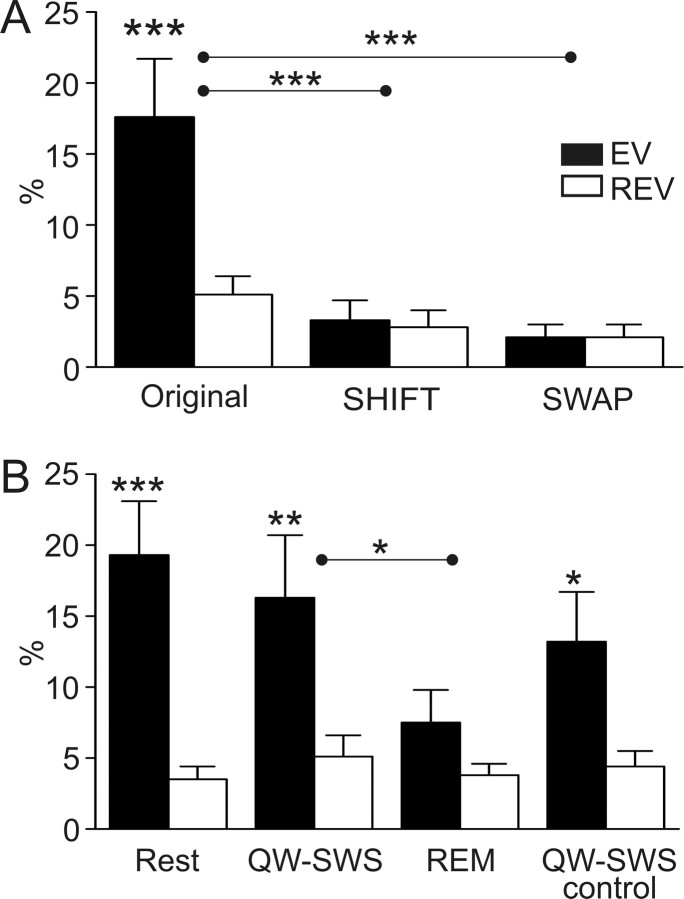Figure 4.
Reactivation in the ventral striatum: general characteristics and sleep phases. A, The EV exceeded the REV when compared across sessions (original: ***p < 0.001; n = 30). Reactivation disappeared when the temporal alignment between spike trains was disrupted (SHIFT, EVshift vs EVoriginal, ***p < 0.001) or when cell identities were randomized (SWAP, EVswap vs EVoriginal, ***p < 0.001). B, Reactivation observed during QW-SWS sleep (**p < 0.02) was not different from the reactivation found for the entire rest episodes, which included all episodes of motionless behavior (rest, n = 16 sessions). In contrast, REM sleep periods did not show reactivation and EV values were significantly lower than for QW-SWS (*p < 0.05). This lack of reactivation cannot be ascribed to the relatively late occurrence of REM sleep periods after sleep onset because post-REM QW-SWS periods showed significant reactivation (QW-SWS control, *p < 0.05). The strength of the observed reactivation during these intervals was not significantly different from the complete QW-SWS periods. Error bars indicate SEM.

